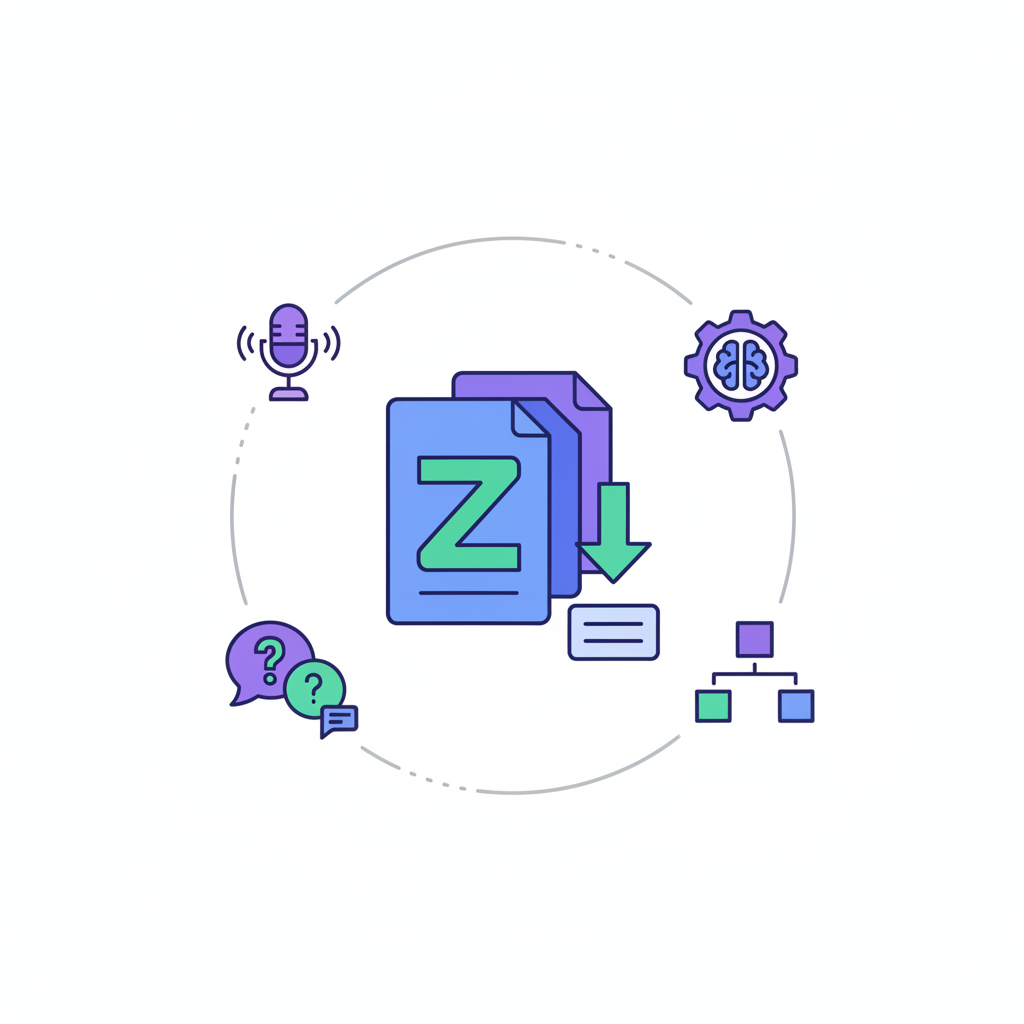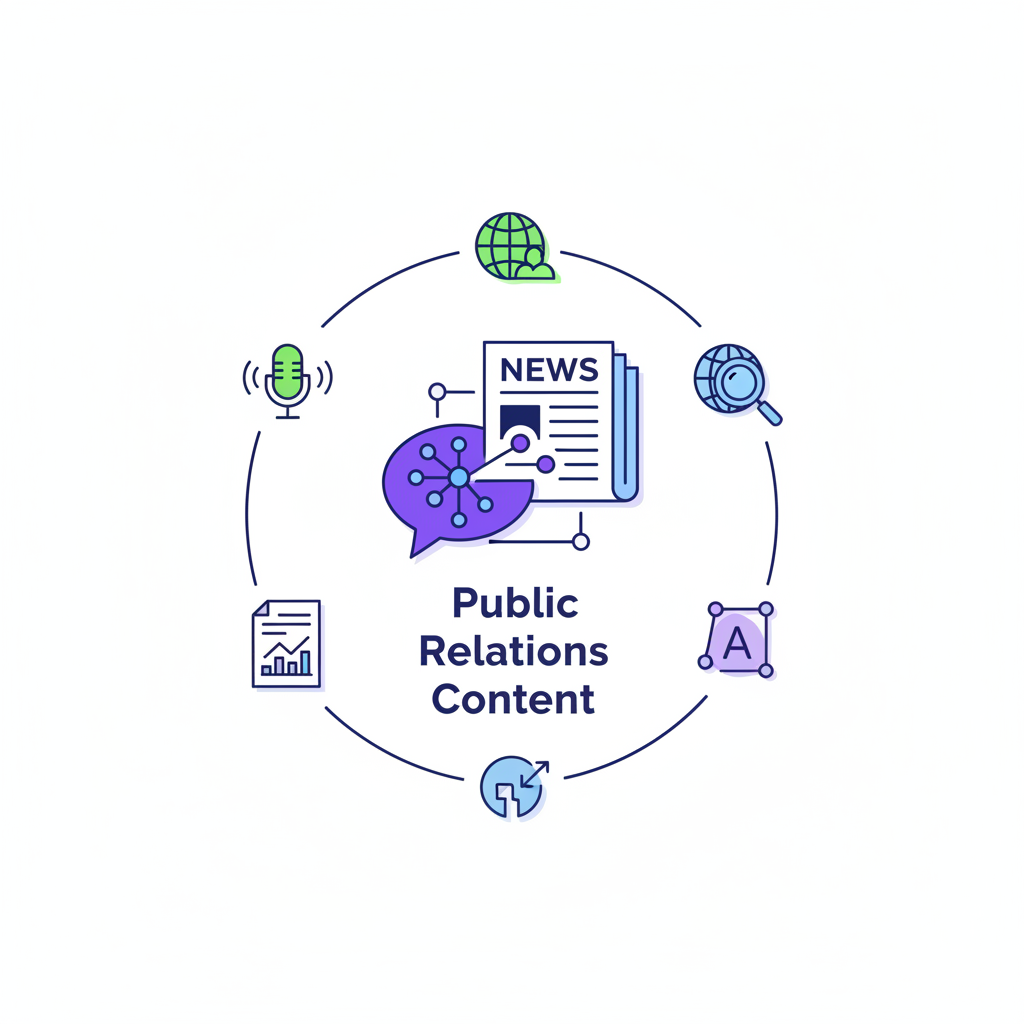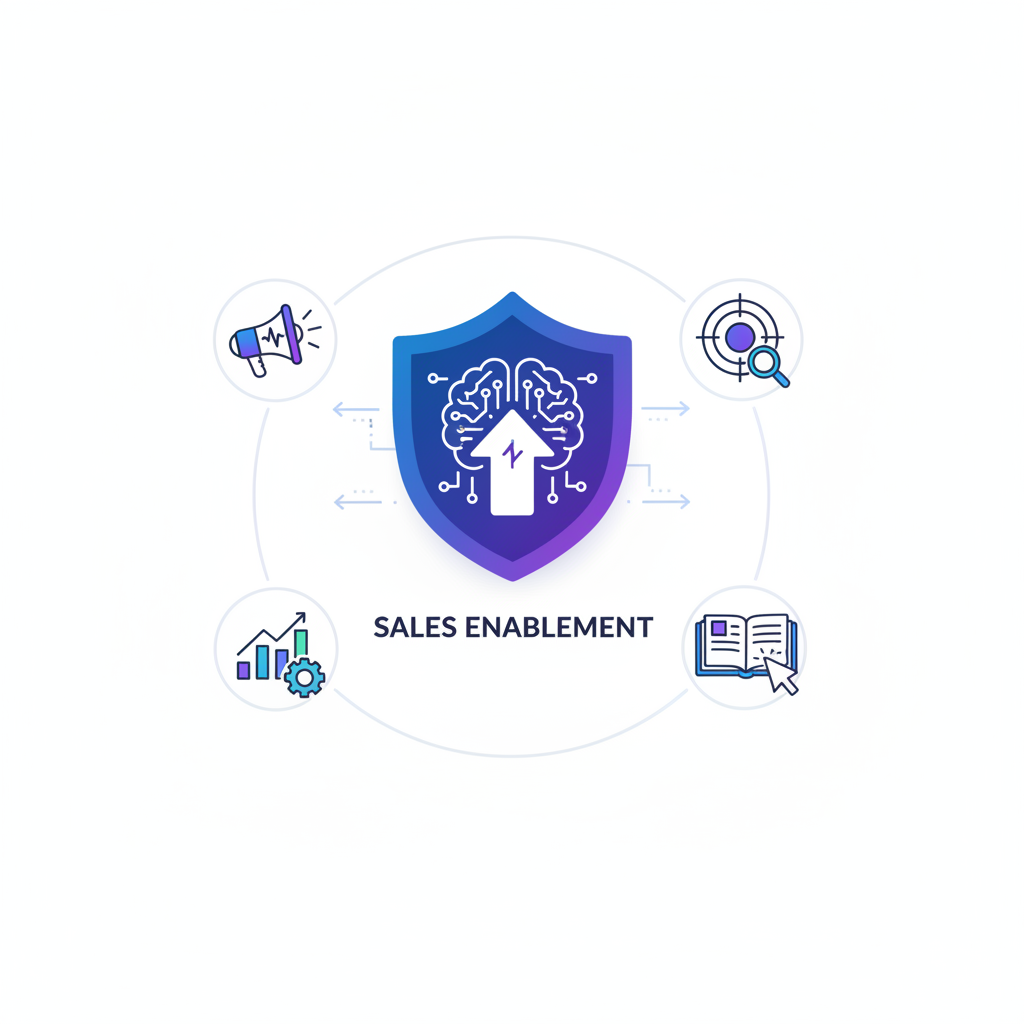Top 10 AI Tools for Document Summarization
The world of information is overwhelming. Discover the top 10 AI tools for document summarization, including QuillBot, ChatGPT, and Claude, that use sophisticated NLP to distill business reports, academic papers, and legal documents into concise, coherent, and accurate summaries, transforming your workflow and saving you countless hours.

In today's hyper-connected world, we are drowning in information. From lengthy business reports and dense academic papers to endless news articles and complex legal documents, the sheer volume of text we encounter daily is overwhelming. The ability to quickly extract key insights is no longer just a convenience—it's a critical skill for professionals, students, and researchers alike. Manually sifting through pages of content is time-consuming, inefficient, and often leads to missed details. This is where the power of artificial intelligence comes into play.
AI-powered document summarization tools have emerged as a revolutionary solution to this information overload. By leveraging sophisticated algorithms and large language models (LLMs), these tools can analyze vast amounts of text and distill them into concise, coherent, and accurate summaries in seconds. They can identify the main arguments, pull out key data points, and present the core message of a document without the fluff. This guide will explore the ten best AI tools for document summarization, breaking down their features, strengths, and ideal use cases. Whether you're a student trying to conquer a mountain of reading, a business analyst needing to digest market reports, or a lawyer reviewing case files, there's a tool on this list that will transform your workflow and give you back your most valuable asset: time.
What is AI Document Summarization?
Before diving into the tools themselves, it's helpful to understand the technology that makes them work. AI document summarization is a process that uses Natural Language Processing (NLP), a subfield of artificial intelligence, to create a shortened version of a text while preserving its most important information. There are two primary methods AI uses to achieve this:
- Extractive Summarization: This is the more traditional approach. The AI scans the document, identifies the most important sentences or phrases based on factors like keyword frequency and position, and then pulls them out verbatim to form a summary. It's like using a highlighter to pick out the key sentences and stringing them together. This method is fast and ensures factual accuracy since it doesn't generate new text.
- Abstractive Summarization: This is a more advanced and human-like method. Instead of just extracting sentences, the AI reads and understands the document's context, concepts, and relationships. It then generates a brand-new summary in its own words, paraphrasing the core ideas much like a person would. This approach, powered by modern LLMs like those behind ChatGPT and Claude, often produces more fluid and natural-sounding summaries.
Most of the top-tier tools today use a hybrid approach, combining the precision of extractive methods with the coherence of abstractive techniques to deliver the best possible results.
How We Selected the Top Tools
Choosing the right summarization tool depends heavily on your specific needs. To compile this list, we evaluated dozens of platforms based on a set of crucial criteria to ensure we recommend only the most effective and versatile options available.
Our evaluation criteria included:
- Accuracy and Coherence: How well does the tool capture the main points without misrepresenting the source material?
- Supported Formats: Can it handle various inputs like text paste, document uploads (PDF, DOCX), and web links?
- Customization: Does the tool allow users to adjust the summary length or style (e.g., bullet points, paragraph)?
- Ease of Use: Is the interface intuitive and user-friendly for non-technical users?
- Special Features: Does it offer unique capabilities like multi-language support, integrations, or question-answering functions?
- Pricing and Value: Is there a generous free plan, and do the paid tiers offer good value for the cost?
Now, let's explore the top 10 AI tools that excel in these areas.
1. QuillBot
QuillBot is widely known as a paraphrasing tool, but its AI-powered Summarizer is equally impressive and incredibly user-friendly. It's an excellent all-around choice for students, writers, and professionals who need quick, reliable summaries without a steep learning curve. The tool allows you to paste text or upload a document and then choose your desired summary length using a simple slider.
One of its standout features is the ability to switch between summary modes. You can generate a summary in key sentences (extractive) or as a cohesive paragraph (abstractive). This flexibility makes it adaptable to various needs, from creating a bulleted list of key takeaways for a presentation to writing a concise abstract for a report.
Key Features
- Adjustable Summary Length: A slider lets you control how concise or detailed the summary is.
- Multiple Summary Modes: Choose between Key Sentences (bullet points) and Paragraph mode.
- Integrated Writing Tools: Seamlessly works with QuillBot's Paraphraser, Grammar Checker, and Citation Generator.
- Browser Extensions: Available for Chrome and Word, allowing you to summarize content directly on web pages or in your documents.
Primary Use Case
Students and academic writers who need to quickly summarize articles, papers, and source materials while also having access to paraphrasing and citation tools in the same platform. Try QuillBot
| Pros | Cons |
|---|---|
| Extremely easy-to-use interface | Free version has a character limit |
| High-quality, coherent summaries | Lacks advanced features for deep research |
| Excellent integration with other writing tools | Document uploads are a premium feature |
| Generous free plan for basic use |
2. ChatGPT
Developed by OpenAI, ChatGPT has become a household name for its conversational AI capabilities, but it's also a powerhouse for document summarization. Its strength lies in its advanced abstractive summarization abilities. You can paste large blocks of text, upload files (with a ChatGPT Plus subscription), or provide a link and ask it to summarize the content in any format you can imagine.
Want a five-point bulleted summary? A one-paragraph abstract? A summary written for a fifth-grader? ChatGPT can do it all. Its conversational nature allows for iterative refinement—you can ask it to make the summary shorter, focus on specific aspects, or explain a particular point in more detail. This interactivity makes it one of the most flexible tools on the list.
Key Features
- Conversational Interface: Refine summaries by giving follow-up instructions.
- High-Level Abstractive Summarization: Creates natural, human-like summaries.
- Versatile Formatting: Can generate summaries as paragraphs, bullet points, tables, and more.
- File Uploads: The paid version (Plus) supports PDF, DOCX, and other file types.
Primary Use Case
Professionals and creatives who need highly customized summaries and want the flexibility to interact with the AI to tweak the output for specific audiences or formats. Use ChatGPT
| Pros | Cons |
|---|---|
| Incredibly versatile and flexible | Free version may be slow during peak times |
| Produces highly coherent and readable summaries | Can sometimes 'hallucinate' or invent details |
| Can handle complex and nuanced topics | File analysis is limited to paid subscribers |
| Free version is very capable |
3. Claude
Claude, from Anthropic, is a direct competitor to ChatGPT and excels in handling extremely large documents. Its key differentiator is its massive context window, which allows it to process and analyze hundreds of thousands of words at once—equivalent to a full-length novel. This makes it the go-to tool for summarizing dense research papers, lengthy legal contracts, or entire books.
Like ChatGPT, Claude operates through a conversational interface. You can upload multiple documents at once and ask it to compare them, synthesize information across them, or answer specific questions based on the provided text. Its summaries are known for being nuanced and contextually aware, making it a favorite among researchers and analysts.
Key Features
- Massive Context Window: Can process and summarize exceptionally long documents (100k+ tokens).
- Multi-Document Analysis: Upload several files and ask Claude to summarize or compare them.
- High Accuracy: Strong focus on reducing AI hallucinations and sticking to the source material.
- User-Friendly Interface: Clean and simple chat-based interaction.
Primary Use Case
Researchers, lawyers, and analysts who need to summarize and extract insights from very long and complex documents or multiple documents simultaneously. Interact with Claude
| Pros | Cons |
|---|---|
| Superior handling of long-form content | Free version has usage limits that reset daily |
| Excellent at synthesizing information across files | Can be less 'creative' than ChatGPT |
| High degree of factual reliability | Newer to the market with fewer integrations |
| Generous free tier for its power |
4. Jasper
Jasper (formerly Jarvis) is a premium AI content creation suite designed for marketing and business teams. While its primary function is generating copy, its summarization features are top-notch and tailored for professional use. Jasper includes a specific 'Text Summarizer' template that guides users to create high-quality summaries quickly.
What sets Jasper apart is its focus on brand voice and tone. You can instruct it to summarize a document in a professional, witty, or formal tone, ensuring the output aligns with your company's communication style. It's perfect for creating executive summaries of reports, summarizing customer feedback, or condensing articles into social media posts.
Key Features
- Template-Driven Workflow: Easy-to-use template specifically for summarization.
- Tone of Voice Adjustment: Customize the summary's tone to match your brand.
- Multiple Content Outputs: Can summarize text for different formats like blog posts, emails, or social media.
- Integration with a Larger AI Suite: Part of a powerful platform for content creation, SEO, and art generation.
Primary Use Case
Marketing teams, content creators, and business professionals who need to summarize documents and repurpose them into other marketing materials while maintaining a consistent brand voice. See Jasper's features
| Pros | Cons |
|---|---|
| High-quality output tailored for business | No free plan, only a free trial |
| Excellent for repurposing content | More expensive than dedicated summarizers |
| Brand voice and tone features are unique | Can be overly complex for simple summarization tasks |
| Strong collaborative features for teams |
5. Gemini
Gemini (formerly Bard) is Google's powerful AI chatbot and a formidable tool for document summarization. Integrated directly with Google's ecosystem, Gemini can summarize content from web pages, Google Docs, and Gmail with ease. Its direct access to the Google index gives it a powerful edge in summarizing web content, as it can pull in real-time information for context.
Gemini's interface often provides multiple 'drafts' of a summary, allowing you to choose the one that best fits your needs. Its integration with Google Workspace is a game-changer for productivity. You can ask it to summarize a long email thread in Gmail or condense a report in Google Docs without ever leaving the application, streamlining your workflow significantly.
Key Features
- Deep Google Ecosystem Integration: Works seamlessly with Docs, Gmail, and Google Search.
- Real-Time Web Access: Can summarize web pages and incorporate current information.
- Multiple Drafts: Provides several summary options for you to compare.
- Multi-modal Capabilities: Can analyze and summarize information from images and text.
Primary Use Case
Users heavily invested in the Google ecosystem (Workspace, Chrome) who need a fast, integrated way to summarize emails, documents, and web content. Explore Gemini
| Pros | Cons |
|---|---|
| Excellent integration with Google services | Summaries can sometimes be less detailed |
| Fast and responsive | Still evolving, features can change |
| Provides multiple summary options | Less effective with offline, uploaded documents |
| Completely free to use |
6. Scholarcy
Scholarcy is a specialized AI tool designed specifically for the academic and research community. It goes beyond simple summarization by creating an interactive 'summary flashcard' of any research paper, report, or book chapter. This flashcard breaks down the document into manageable sections: key concepts, abstract, synopsis, highlights, and even a comparative analysis that cross-references the paper's findings with other research.
It also extracts figures, tables, and references, making it an indispensable tool for literature reviews. Scholarcy understands the structure of academic writing, allowing it to identify and summarize components like the hypothesis, methods, and results with high accuracy.
Key Features
- Interactive Summary Flashcard: Breaks down papers into structured, easy-to-digest sections.
- Reference and Citation Extraction: Automatically pulls out and links all references.
- Figure, Table, and Data Extraction: Isolates important data visualizations and tables.
- Browser Extension and Library: Save summarized articles to a personal library for future reference.
Primary Use Case
Students, academics, researchers, and scientists who need to quickly evaluate and digest dense scholarly articles and build a research library. Check out Scholarcy
| Pros | Cons |
|---|---|
| Tailor-made for academic documents | Not suitable for general or business documents |
| Extracts more than just text (tables, figures) | Free version is limited in features |
| Creates a structured, deep summary | The interface can feel cluttered with information |
| Helps accelerate literature reviews | Subscription required for full functionality |
7. Genei
Genei is another powerful research-focused summarizer that acts as an intelligent assistant for content analysis. It's designed to speed up workflows for researchers, content writers, and students. You can add documents and web pages to a project, and Genei will automatically summarize them and extract key information.
Its standout feature is its AI-powered notebook. As you read, you can ask questions, and Genei will search across all your project documents to find the answer, citing the sources. It uses advanced NLP to identify themes, arguments, and definitions across your entire reading list, helping you connect ideas and build a deeper understanding of your topic.
Key Features
- Project-Based Workflow: Organize all your research documents in one place.
- AI-Powered Search and Q&A: Ask questions and get answers from across all your documents.
- Thematic Analysis: Automatically identifies key themes and keywords in your research.
- Smart Notebook: Helps you take notes and build arguments with AI assistance.
Primary Use Case
Serious researchers and writers working on large projects (e.g., dissertations, long-form articles, reports) who need to synthesize information from multiple sources. Learn about Genei
| Pros | Cons |
|---|---|
| Excellent for managing and synthesizing multiple sources | Has a steeper learning curve than simpler tools |
| AI-powered Q&A is a powerful feature | Primarily focused on text-based research |
| Speeds up the research process significantly | Subscription-based with a limited free trial |
| High-quality, context-aware summaries |
8. Resoomer
Resoomer is a straightforward, no-frills summarization tool that excels at one thing: summarizing online articles and texts quickly. It's primarily a browser-based tool with extensions for Chrome, Firefox, and Opera. When you're on an article you want to summarize, you simply click the extension button, and it generates a summary in seconds.
It's designed for efficiency, providing several summary types: automatic, manual (length-adjusted), and optimized (focused on keywords). While it lacks the advanced features of larger platforms, its speed and simplicity make it perfect for students and professionals who need to quickly get the gist of an article without leaving their browser.
Key Features
- Browser Extension Integration: Summarize web pages with a single click.
- Fast and Efficient: Generates summaries almost instantly.
- Multiple Summary Modes: Offers different levels of summarization for various needs.
- Multi-language Support: Works with a wide range of languages.
Primary Use Case
Users who primarily need to summarize online articles, blog posts, and other web-based content quickly and efficiently. Use Resoomer
| Pros | Cons |
|---|---|
| Very fast and easy to use | Lacks advanced features like file uploads in free version |
| Excellent for summarizing web content | Interface contains ads in the free version |
| Free version is highly functional | Summaries can be more extractive than abstractive |
| No registration required for basic use |
9. TLDR This
Named after the internet acronym for "Too Long; Didn't Read," TLDR This is another excellent tool for summarizing web articles. It offers a clean, ad-free interface and provides high-quality summaries that are often better structured than those from similar tools. You can paste a URL, and it will automatically pull the article's content and generate both a short, bulleted summary and a more detailed paragraph-based one.
TLDR This also provides useful metadata, such as the estimated reading time of the original article versus the summary, and extracts important images and keywords. Its browser extension is one of the best available, making it a seamless part of your online reading experience.
Key Features
- Clean, Ad-Free Interface: Provides a pleasant user experience.
- Dual Summary Formats: Generates both key sentences and a detailed AI summary.
- Metadata Extraction: Pulls out author, date, images, and reading time.
- Excellent Browser Extension: Highly rated and easy to use.
Primary Use Case
Avid online readers, journalists, and content curators who want to quickly process and understand a large volume of articles from the web. Check out TLDR This
| Pros | Cons |
|---|---|
| High-quality, well-structured summaries | Free plan has daily limits |
| No ads, even in the free version | Primarily designed for URLs, not document uploads |
| Provides useful context and metadata | Advanced features require a premium subscription |
| Simple and effective |
10. Copilot
Microsoft's Copilot, deeply integrated into the Windows and Microsoft 365 ecosystem, is a powerful assistant for document summarization. Its biggest advantage is its native integration with Microsoft Edge, Word, and other Office apps. In the Edge browser, Copilot can summarize any webpage or PDF you have open in the sidebar. It can also generate key insights and answer questions about the document.
For business users, its integration into Microsoft 365 is transformative. Copilot can summarize long Word documents into executive summaries, condense lengthy email chains in Outlook, and even create a summary of a Teams meeting you missed. This deep, contextual integration makes it an unparalleled productivity booster for those within the Microsoft ecosystem.
Key Features
- Deep Microsoft 365 Integration: Summarize content within Word, Outlook, Teams, and Edge.
- Context-Aware Summaries: Understands the context of your work to provide relevant summaries.
- Conversational Interaction: Ask follow-up questions about the document.
- Productivity-Focused: Designed to streamline business workflows.
Primary Use Case
Business professionals and enterprise teams who use the Microsoft 365 suite and want a seamlessly integrated AI assistant to improve productivity. Learn about Copilot
| Pros | Cons |
|---|---|
| Unmatched integration with Microsoft products | Full functionality requires a Microsoft 365 subscription |
| Excellent for business productivity | Less effective as a standalone tool outside the ecosystem |
| Can summarize various content types (docs, emails, meetings) | Performance can depend on the specific application |
| Leverages powerful OpenAI models |
AI Summarization Tools Comparison
To help you choose, here is a table comparing the key aspects of our top 10 tools.
| Tool | Best For | Supported Formats (Free/Paid) | Free Plan Availability | Key Feature |
|---|---|---|---|---|
| QuillBot | Students & Writers | Text, DOCX (Paid) | Yes, with limits | Integrated paraphraser and grammar checker |
| ChatGPT | Custom & Creative Summaries | Text, Files (Paid) | Yes, with limits | Conversational refinement of summaries |
| Claude | Very Long Documents & Research | Text, Multiple Files | Yes, with limits | Massive context window for long texts |
| Jasper | Marketing & Business Content | Text | No (Free Trial) | Brand voice and tone customization |
| Gemini | Google Workspace Users | Text, URLs, Google Docs | Yes | Deep integration with Google services |
| Scholarcy | Academics & Researchers | PDF, URL | Yes, with limits | Interactive academic summary flashcard |
| Genei | In-depth Research Projects | PDF, URL | No (Free Trial) | AI-powered Q&A across multiple documents |
| Resoomer | Quick Web Article Summaries | URL, Text | Yes, with ads | Fast, one-click browser extension |
| TLDR This | Avid Online Readers | URL, Text | Yes, with limits | Clean interface and dual summary formats |
| Copilot | Microsoft 365 Business Users | Webpages, PDFs, Office Docs | Yes (in Edge/Windows) | Seamless integration into Microsoft apps |
How to Choose the Right AI Summarization Tool
With so many great options, the best tool for you depends entirely on your needs. Here’s a quick guide to help you decide:
- For Students and Academic Writers: QuillBot is a fantastic starting point due to its combination of summarizing, paraphrasing, and citation tools. For heavy-duty research involving dozens of papers, Scholarcy or Genei are worth the investment.
- For Business Professionals and Teams: If your organization runs on Microsoft 365, Copilot is the undeniable choice for its seamless integration. For marketing teams, Jasper offers unparalleled features for repurposing content while maintaining brand voice.
- For General Productivity and Casual Use: ChatGPT, Claude, and Gemini are all excellent, powerful, and free options. If you need to handle very long documents, choose Claude. If you want deep integration with Google services, pick Gemini. For maximum flexibility, ChatGPT is a great all-rounder.
- For Summarizing Online Content: If your primary goal is to quickly digest news articles and blog posts, the browser extensions from Resoomer or TLDR This are the most efficient tools for the job.
Conclusion: Embrace Efficiency with AI
The flood of digital information shows no signs of slowing down, but with the right tools, you no longer have to feel like you're falling behind. AI document summarizers are powerful allies in the quest for knowledge and productivity, capable of transforming dense, time-consuming texts into digestible insights in a matter of seconds.
Each of the ten tools we've explored offers a unique set of strengths, from the academic rigor of Scholarcy to the business-centric integration of Copilot and the creative flexibility of ChatGPT. The best way to find your perfect fit is to identify your primary needs and try out a few of the free versions or trials. By incorporating one of these tools into your workflow, you can save countless hours, make more informed decisions, and stay ahead in a world that never stops producing content. Take the first step today and reclaim your time from the clutches of information overload.
Featured Tools

10Web is an AI-powered WordPress platform that offers automated website building, hosting, and optimization with AI assistance for content and image generation.

A global creative platform connecting businesses with freelance designers for custom graphic design projects.

Acquire.io is a customer engagement platform offering live chat, AI chatbots, co-browsing, and video chat to enhance customer support and sales.

A customer experience automation platform combining email marketing, marketing automation, and CRM with AI-powered personalization.

An AI-powered customer service automation platform that delivers personalized, instant support across various channels.
Top AI Categories
Related Articles

Top 10 AI Tools for Fashion Bloggers
Discover insights about AI tools and technology.

Top 10 AI Tools for Public Relations Content
Discover insights about AI tools and technology.

Top 10 AI Tools for Sales Enablement
Discover insights about AI tools and technology.